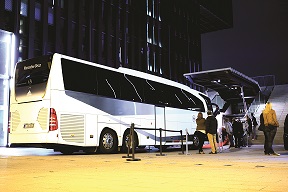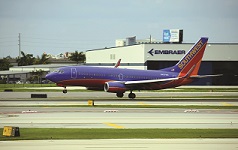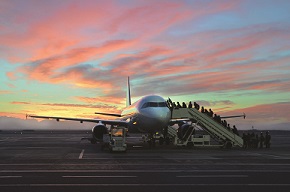

This article will concentrate on four modes of transportation: private vehicle, motor coach, group air and charter air options.
Private Vehicle Travel
Private vehicles are one of the most common modes of transportation to transport a team or delegation to an event. This mode is more commonly used for destinations of shorter length. Everyone has had the experience of piling everyone into the mini-vans and heading out to compete. A plus is that there is not a lot of planning involved. Mapping out fuel stops, eating establishments and rest spots along the way is the extent of the planning. As well, this is the most economical method. Fuel costs can be spread throughout the attendees as well.
However, there are many minuses as well. The first is liability. Many coaches and/or parents do not want to take the liability of transporting others. Also, finding the number of vehicles that it will take to transport the team is a challenge – and there is the possibility of vehicles breaking down on the way. Lastly, if traveling a long distance, this mode can be the most taxing on the team, thus adversely impacting the performance of the team.
Motor Coach Travel
Aside from private vehicles, the next least expensive mode of transportation is motor coach travel. Everybody has heard stories and seen movies of minor league baseball teams traveling from city to city aboard a chartered bus. For those who are budget minded, this is the favored mode of travel. The cost is relatively inexpensive compared to air travel, and the team has its own transportation from their hotel to the venue. As well, the team can tour the host city, eat at its choice of restaurant, etc.

When utilizing a motor coach for a trip, there are points to remember. The first is to always check the maintenance certificate and logs of the motor coach company. Do checks on the company and ask for maintenance logs. It does not matter how much money a team saved if the motor coach breaks down on the route and they miss the competition. Other things to remember are whether tolls, fuel surcharges, and bus driver accommodations are included. It is best to address these issues upfront and have them in the agreement.
Discuss with the driver beforehand how many stops that you want to take and the type of eating establishments you want them to stop at. If not, the drivers will stop at places that are appealing to them.
For motor coach travel, a team or delegation should start researching at least six months ahead of time. The schedules of drivers and motor coaches start to fill up. The majority of them have very liberal cancellation policies so it is easy to book and then cancel at a later date if something happens.
Group Air Travel
If traveling a distance on a budget is necessary, commercial air travel is the way to go. The time will be greatly shortened from private vehicle and motor coach travel, thus ensuring that the team or delegation will be refreshed and prepared to compete on the highest level.
When traveling with 10 or more attendees, group air is the way to go. Unlike individual air tickets where the tickets must be purchased within 24 hours, group tickets may be held with no names for periods up to 21 days prior to travel. This is very important when teams or individuals must go through a qualification process. The normal deposit is $50 to $100 per seat to hold the group. However, if you go through a professional travel company with status with the airline, they can get the deposit waived. The airline will then give to you within 60 days of travel to cancel with no penalty or reduce with no penalty down to 10 travelers.
A plus with this is the airlines are offering comp tickets (normally one per 30) for booking group tickets.

Charter Air Travel
The most desirable form of team travel but the most expensive is charter air travel. The difference between group air travel and charter air travel is that with charter air travel, the team will own the entire aircraft. The route with charter air travel will be direct from origination to destination with no stops (unless contracted to stop and pick up other members of the team) where group air travel are on normal scheduled aircraft and can include one or more stops between origination point and destination point. As well, the airline will work with teams on departure and return times. This is the mode that most collegiate and professional football and basketball teams take. The team can normally go into a city the day of or day before the game and out immediately after the game. Charter air travel does not strap a team to a schedule. This way, the student athlete only misses a minimal amount of classwork time.
Another advantage is the ease of charter aircraft. Many airlines that charter will allow the team to embark and debark directly on the tarmac. We have seen an aircraft land, stop on the tarmac, unload the team and baggage directly on to the bus and immediately proceed to the hotel. This is much more advantageous than having to claim luggage in the terminal and being mixed in with normal airline traffic. Also, charter air groups are much more lenient with last-minute name changes, etc.
As stated above, the main downfall of charter air travel is the price. With charter air travel, an airline will take an entire aircraft out of service to accomplish the trip. Many times, the aircraft must “deadhead” into an origination city or “deadhead” out of the destination city in order to be put back into regular service. This is why charter air is less expensive in the hub cities of the major airlines.
Summary
As we stated, each mode of travel has its pros and its cons. With any of the four modes of travel, it is recommended to utilize the services of an experienced travel management company. These companies have good relationships with the major airlines and motor coach companies and will help a team navigate through the questions and contractual obligations that each entails.

